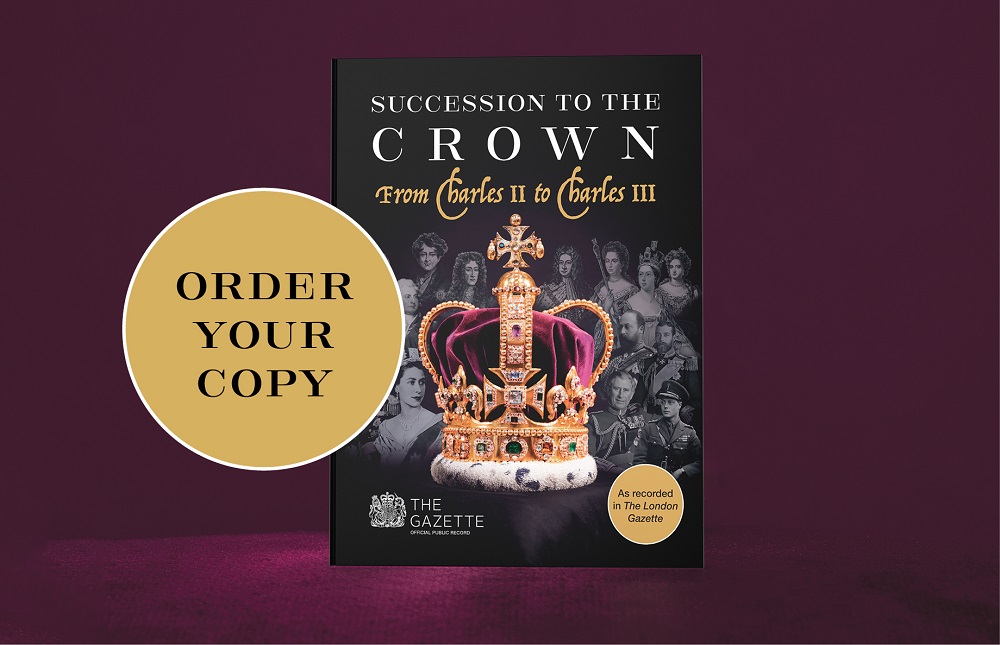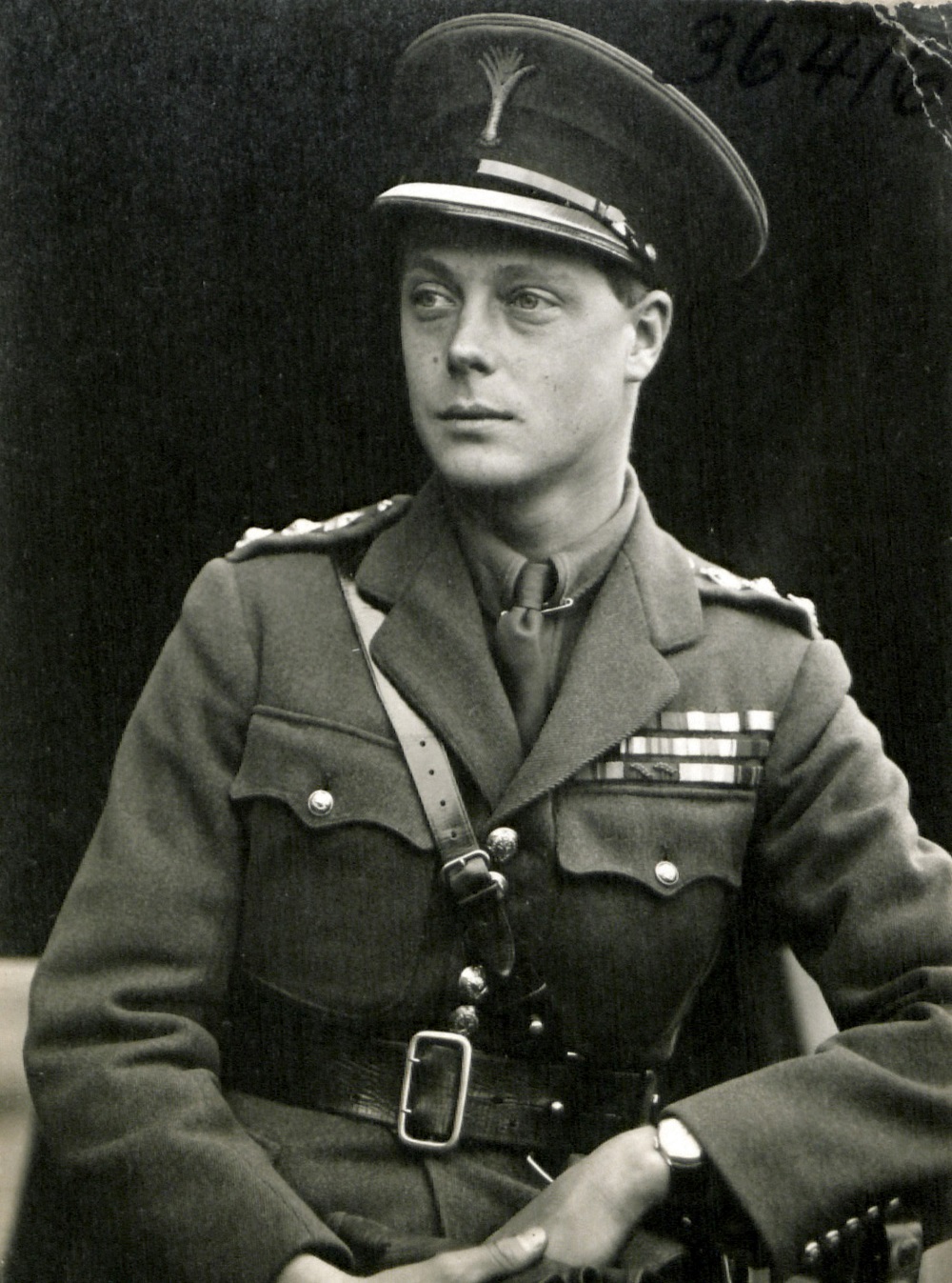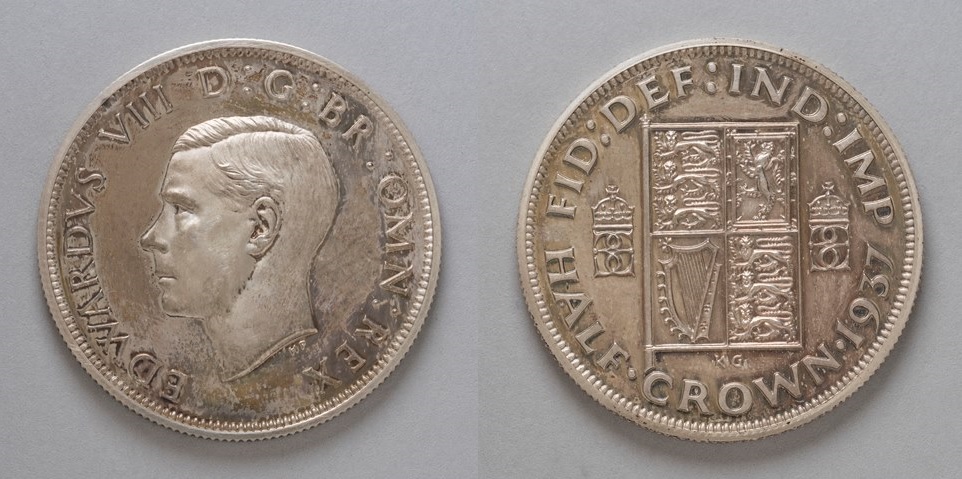Succession to the Crown: King Edward VIII

As the official public record since 1665, The Gazette has been recording successions to the Crown for over three centuries. As part of our ‘Succession to the Crown’ series, historian Russell Malloch looks through the archives at the accession and reign of King Edward VIII, as described in The Gazette.
Chapters
Succession to the Crown paperback

To celebrate the new king’s coronation, The Gazette’s Succession to the Crown series has been released in paperback.
Available to order now from the TSO Shop, the Succession to the Crown paperback explores the coronations, honours and emblems of the British monarchy, and includes an exclusive chapter on the accession of King Charles III.
Find out more in the link below.

Accession Council
King George V died at his home in Norfolk just before midnight on 20 January 1936, and so the authorities had to arrange an accession council, rather than complete the commission for the counsellors of state that had been discussed earlier that day at Sandringham.
By this time the majority of the privy counsellors were past or present government ministers or senior parliamentary figures, together with judges and a few ambassadors, bishops and members of the royal household. Most lived in or near the seat of government in London, and only a few had personal links with the British Commonwealth of Nations.
Within a few hours of the King’s death, communications were being sent to counsellors in London and at more distant locations. One telegram was issued at 3.00am to Wilfrid Normand, who lived in Edinburgh where he had served as the head of the Scottish judiciary since 1935: “The Accession Council will be held at St James’s Palace today 4 pm entrance in Friary Court Levee dress with crape band on left arm Decorations Visiting card should be handed to messenger on entering. Clerk of the Council.”
Lord Normand was unable to take part in the London council, but instead he attended one of the many ceremonies that were organised throughout the British Empire to mark the accession of King Edward VIII. In this case, he witnessed the proclamation that was delivered by the lord provost at the Mercat Cross in Edinburgh.
The signatures on the proclamation included that of Archbishop Lang (Gazette issue 34249), who had been at Sandringham on the previous day and would play a significant part in the negotiations that led to Edward’s decision to abandon the throne after less than a year.
The Crown’s relationship with the nations of the British Empire was reflected in the King’s accession declaration, in which he referred to his reliance on the loyalty and affection of the people throughout the Empire and the wisdom of their parliaments. This demonstrated how far the geographical extent of the royal domain had altered since the late 17th century, when the Westminster Convention and the Scottish Estates had determined who should succeed King James II and VII.
Edward’s accession proclamation was of some historic interest, as it was the first to be signed by a woman, as Margaret Bondfield had become the first female privy counsellor after attaining ministerial rank in Ramsay MacDonald’s administration.
The members of the College of Arms then carried out their customary role of reading the proclamation in public in London, starting with Sir Gerald Wollaston, Garter king of arms, who performed his duty at the balcony of Friary Court at St James’s Palace on 22 January 1936.
Royal authority
While the process of altering the great seal, documents and insignia began to be carried out by the officials at the Royal Mint and by jewellers such as Collingwood and Garrard, a bill was introduced in Parliament to regulate the exercise of the royal authority, and to provide for the appointment of a regent should the need arise. The bill was deemed necessary as the events of 1928 and 1936 had shown that there was no modern legal provision to deal with the long-term inability of the sovereign to act, but only the more distant precedent of what had happened after King George III had become incapacitated. This measure did not receive royal assent before the King left the throne.
There was also the business of the award of honours to deal with, as the New Year list of 1936 had been gazetted, but the relevant documents had not been signed. In practice, many of the warrants were signed by King Edward, as in one dated 5 February 1936 that included the following text:
“Whereas our beloved father His late Majesty King George the Fifth then being sovereign of the said Most Excellent Order [of the British Empire] was graciously pleased to signify his intention to nominate and appoint you to be a member of the civil division of the said order and to give directions for the appointment to have effect from the first day of January, 1936, in the twenty-sixth year of his reign: and whereas our dearly beloved father died before affixing his sign manual to his royal warrant in that behalf we do by these presents grant unto you the dignity of a member.”

Knight of St Patrick
Two notable developments in the honours system were implemented during the reign. The first came on St Patrick’s Day of 1936, when the King named his brother and likely heir Albert, Duke of York, to be the first person to join the Order of St Patrick since the partition of Ireland 14 years earlier (Gazette issue 34265).
The altered status of Ireland and its peerage, combined with the impact of the Statute of Westminster and the order’s uneasy relationship with the government in Dublin, which was now the capital of the Irish Free State, led to policy decisions that resulted in the duke being the last knight of St Patrick to be appointed.
This would prove to be a further example of the royal authority being curtailed in terms of the distribution of honours within the Empire, and followed the decisions of the Canadian and South African governments to reduce their involvement in the British system, even before the imperial conference of 1926.
The Order of St Patrick was allowed to lapse rather than being given a different function, as happened with the Order of St Michael and St George in the 1860s when its original purpose became largely irrelevant after the Ionian Islands were ceded to Greece, and the Mediterranean order was instead assigned a more international role.
The second measure was the decision to admit women as members of the Victorian Order, as they had only been awarded the Royal Victorian Medal before letters patent were issued in May 1936 that had the effect of enabling women to join the order (Gazette issue 34290). The first woman to do so was the King’s mother, Queen Mary (Gazette issue 34296), who had recently succeeded him as grand master of the Order of the British Empire and so became responsible for signing the majority of the warrants of appointment that were issued from the Central Chancery.
Golden spurs
It was announced that King Edward’s coronation would take place on 12 May 1937, and the names of the privy counsellors who would judge the claims of those wishing to take part in the ceremony were published in The Gazette in May 1936 (Gazette issue 34289). Their first meeting was held at St James’s Palace in July when it was decided that, in line with precedent, only a limited number of counsellors should be summoned to attend the court of claims, including Lord Normand as the head of the Scottish judiciary, together with the lord chancellor, the earl marshal and the lord chief justice.
While the court of claims got down to its work, the King attended his first session of Parliament on 3 November 1936, and made and subscribed the declaration required by the Accession Declaration Act 1910, before delivering a speech in which he referred to pressing issues such as the appeasement of Europe and non-intervention in Spain, as well as his hope to follow his father’s example by visiting India for a coronation durbar.
Three weeks later Lord Normand and his colleagues considered the coronation ceremonial, when the only contested claim related to who should carry the golden spurs, that part of the regalia that had appeared in the knight bachelor’s badge since 1926. The court heard petitions on behalf of three claimants, including Lord Hastings, who was represented by Gavin Simonds, who later chaired the court of claims for Queen Elizabeth’s coronation. During the war, Simonds wrote to Normand, “It is a long time since I argued before you the right of Lord Hastings to carry a spur at the coronation. How strange an aspiration that seems in these days!”
The custody of the regalia also seemed a strange aspiration by the time Lord Normand came to consider the Hastings petition, as the King’s personal affairs had moved him ever closer to taking the decision to renounce the Crown and to marry Mrs Wallis Simpson.
Declaration of abdication
The fate of the fountain of honour rather than the spurs became the focus of public attention a few days after the court of claims sat, as Edward’s personal crisis came to a head when the prime minister said the King faced three choices: that he could give up the idea of marriage, that he could marry contrary to the advice of his ministers, or that he could abdicate.
Baldwin urged Edward to stay, but the King said that however painful the prospect, he had decided to marry and would renounce the throne for himself and his descendants, and so he proceeded to execute his instrument of abdication at Fort Belvedere in Windsor Great Park on 10 December 1936 (Gazette issue 34349).

About the author
Russell Malloch is a member of the Orders and Medals Research Society and an authority on British honours.
See also
Gazette Firsts: The history of The Gazette and royal coronations
The Demise of Queen Elizabeth II and Accession of King Charles III
Queen Elizabeth II - In Memoriam
Images (in order of appearance)
The Gazette
GL Archive / Alamy Stock Photo
Royal Collection Trust / © His Majesty King Charles III 2023
Keystone Press / Alamy Stock Photo
Publication date: 1 March 2023
Any opinion expressed in this article is that of the author and the author alone, and does not necessarily represent that of The Gazette.
